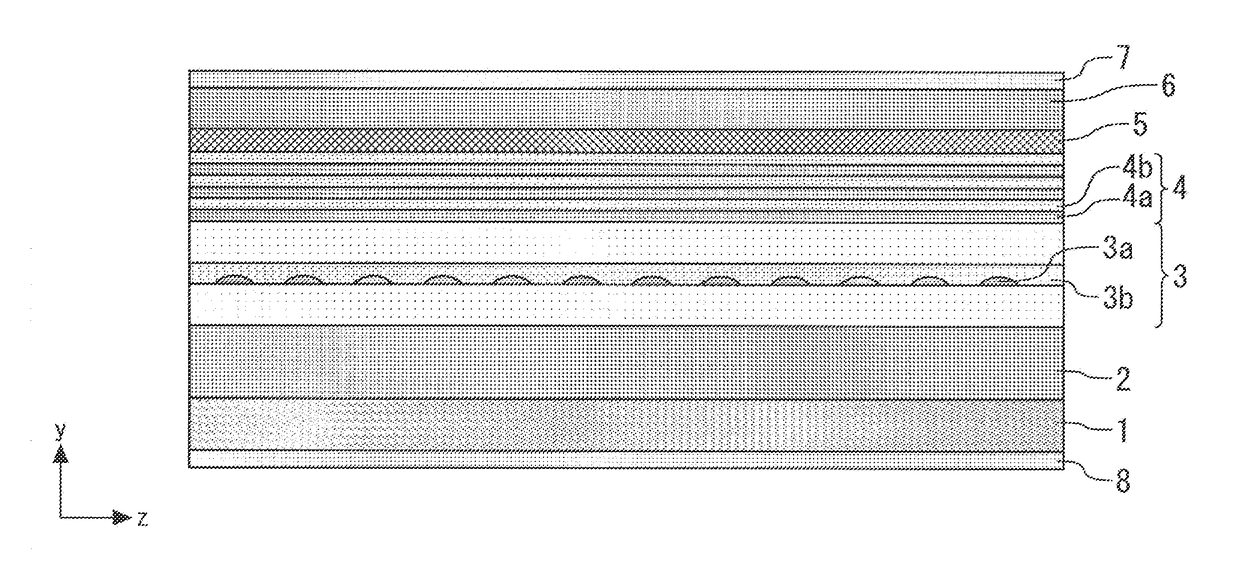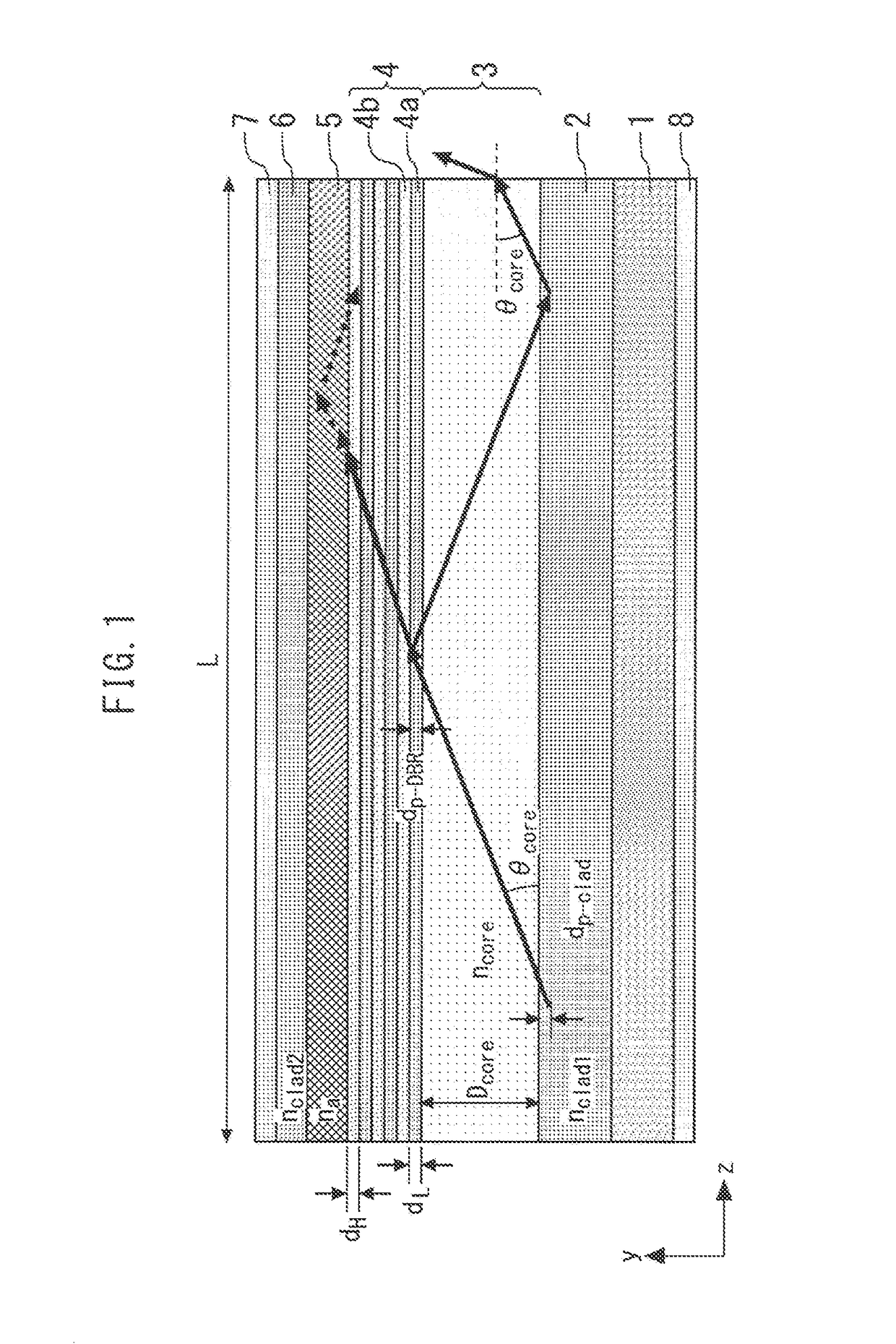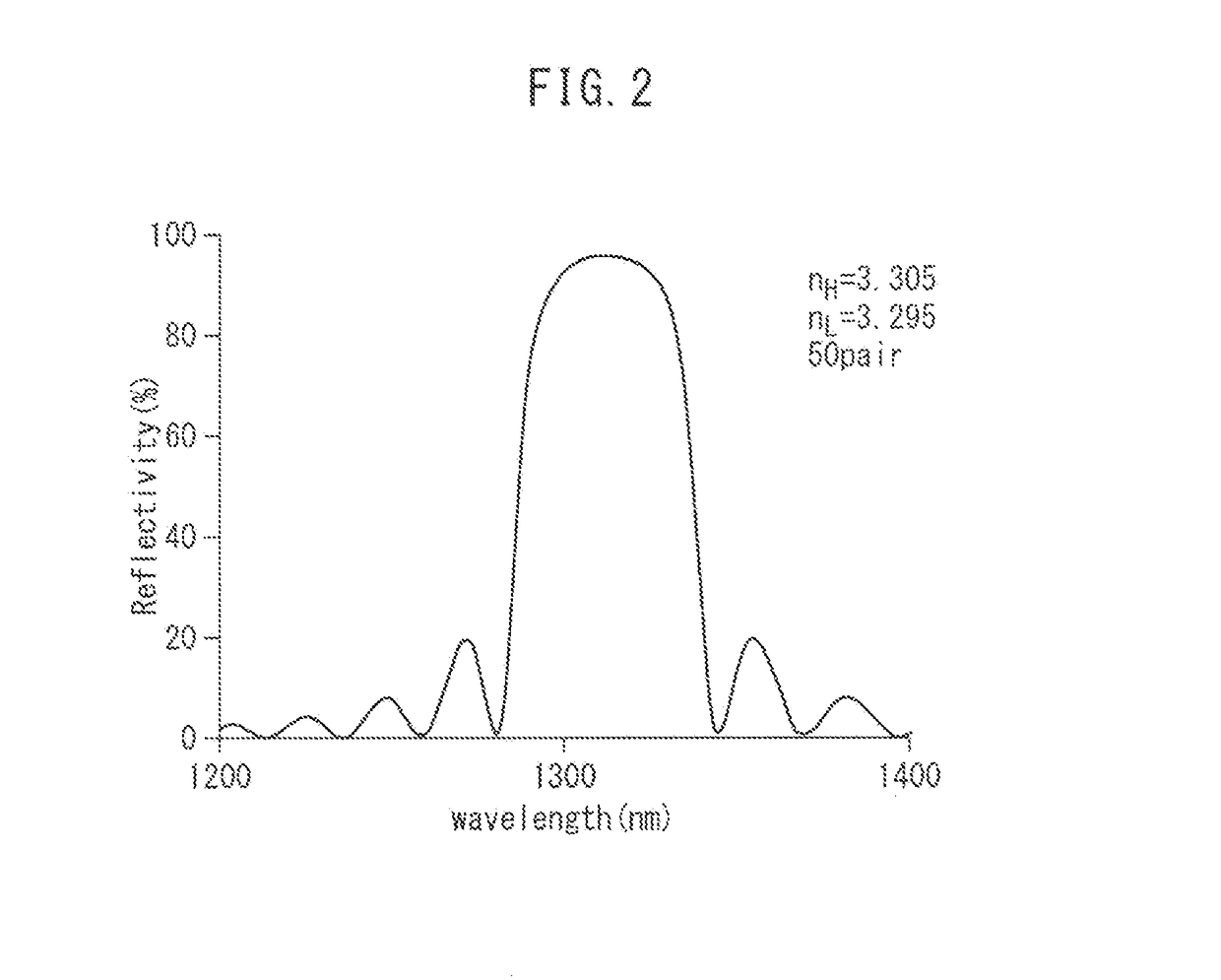Edge-emitting semiconductor laser
- Summary
- Abstract
- Description
- Claims
- Application Information
AI Technical Summary
Benefits of technology
Problems solved by technology
Method used
Image
Examples
first embodiment
[0021]FIG. 1 is a sectional view of an edge-emitting semiconductor laser according to a first embodiment of the present invention. A first cladding layer 2 having a first refractive index nclad1 and formed of InP is fainted on an InP substrate 1. An active layer 3 having a second refractive index ncore higher than the first refractive index nclad1 is formed on the first cladding layer 2. The active layer 3 may be constituted of an InGaAsP-based or AlGaInAs-based semiconductor and may include a multiple quantum well layer. The thickness of the active layer 3 is Dcore.
[0022]A Bragg reflector 4 (DBR) formed of an InGaAsP-based or AlGaInAs-based semiconductor is formed on the active layer 3. The Bragg reflector 4 has a periodic structure in which low-refractive-index layers 4a each having a thickness dL and a refractive index nL, and high-refractive-index layers 4b each having a thickness dH and a refractive index nH are alternately superposed one on another. These refractive indices ar...
second embodiment
[0039]FIG. 5 is a sectional view of an edge-emitting semiconductor laser according to a second embodiment of the present invention. A light absorption layer 9 is formed on the first cladding layer 2 instead of the Bragg reflector 4 and the light absorption layer 5 in the first embodiment, and a Bragg reflector 10 is formed on the light absorption layer 9. The active layer 3 is formed on the Bragg reflector 10. The Bragg reflector 10 has low-refractive-index layers 10a and high-refractive-index layers 10 each having a thickness larger than λ / 4n and alternately laid one on another, as does the Bragg reflector 4. In other respects, the arrangement is the same as that in the first embodiment. Also with the arrangement according to the present embodiment, the same effect as that in the case of the first embodiment can be obtained.
third embodiment
[0040]FIG. 6 is a sectional view of an edge-emitting semiconductor laser according to a third embodiment of the present invention. In the third embodiment, both the Bragg reflector 4 and light absorption layer 5 in the first embodiment and the Bragg reflector 10 and light absorption layer 9 in the second embodiment are provided. By providing the absorption layers and the Bragg reflectors both on the upper side and on the lower side of the active layer 3 in this way, wavelength selectivity higher than that in the first embodiment can be obtained.
PUM
 Login to View More
Login to View More Abstract
Description
Claims
Application Information
 Login to View More
Login to View More - R&D
- Intellectual Property
- Life Sciences
- Materials
- Tech Scout
- Unparalleled Data Quality
- Higher Quality Content
- 60% Fewer Hallucinations
Browse by: Latest US Patents, China's latest patents, Technical Efficacy Thesaurus, Application Domain, Technology Topic, Popular Technical Reports.
© 2025 PatSnap. All rights reserved.Legal|Privacy policy|Modern Slavery Act Transparency Statement|Sitemap|About US| Contact US: help@patsnap.com



